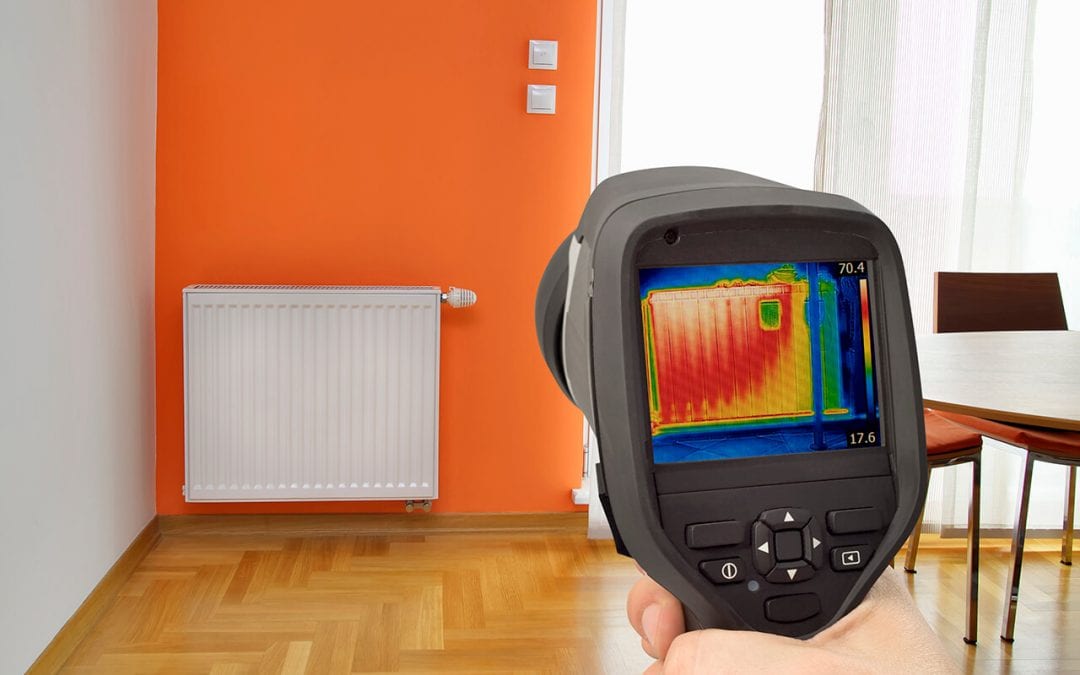Some home inspectors use modern technology to help them examine a home. Thermal imaging in home inspections is when a special infrared camera is used to reveal and capture temperature variations in a specific area. These infrared images provide insight into issues and potential concerns with a property.
A thermal camera can help your home inspector locate problem areas within the electrical, plumbing, and insulation systems. For a better understanding of thermal imaging and how it’s useful, here are some things to know about infrared cameras in inspections.
How Does Thermal Imaging in Home Inspections Work?
A thermal imaging camera captures heat signatures throughout the house. Using the information revealed in the infrared images, the inspector can see if heating and cooling units work properly, find electrical hot-spots, look for air leaks, and determine if rooms are properly insulated. This information will be shared with the homeowner in a detailed inspection report.
3 Issues Thermal Imaging Can Detect
Water Leaks
With infrared thermal imaging, if there are hidden water leaks behind walls or in the ceiling, a thermal camera can detect them. The camera will show potential moisture problems by “seeing” a cooler temperature in the affected area.
Electrical Issues
Your inspector will scan electrical panels as part of the home inspection process. The infrared images might reveal excessive heat in an area that indicates an electrical hotspot. The inspector can then document this in the inspection report for further investigation.
Problems with Insulation
Heat loss also shows up in infrared images. The camera may show cooler areas around doors and windows, and in walls, roofs, and floors. This makes it possible for an inspector to detect air leaks and areas of missing or insufficient insulation.
Thermal Imaging in Home Inspections Provides a More Detailed Report
Home inspectors provide pictures, including infrared images, in their final report along with explanations of what the images show. Varying levels of heat will appear as different colors in the image. Looking at the report, you’ll be able to see temperature changes that indicate problems in certain areas.
Save Money
Thermal inspections give the homeowner information to help correct issues that lead to high electric bills or to resolve matters that could require costly maintenance later. Infrared cameras detect moisture that could lead to serious water damage.
Thermal imaging can locate problems in electrical systems before they become a hazard that puts you and your family in danger. A thermal imaging scan might also reveal issues with energy efficiency, including cracks, gaps, and poor insulation. All of these negatively impact your home’s comfort and monthly utility bills.
The goal of a home inspection is to learn about the true condition of the home. Thermal imaging in home inspections improves an inspector’s ability to gather information on a property. This data is important to realtors, buyers, sellers, and contractors.
Infrared images show homeowners where improvements need to be made. It helps everyone with a stake in the property make informed decisions. If you’re looking to have a home inspected, choose a company that uses thermal imaging for the most thorough and accurate inspection report.
Phoenix Property Inspections uses thermal imaging in our home inspections. We serve San Luis Obispo, Santa Barbara, and Ventura counties in California. Contact us to request an appointment.

